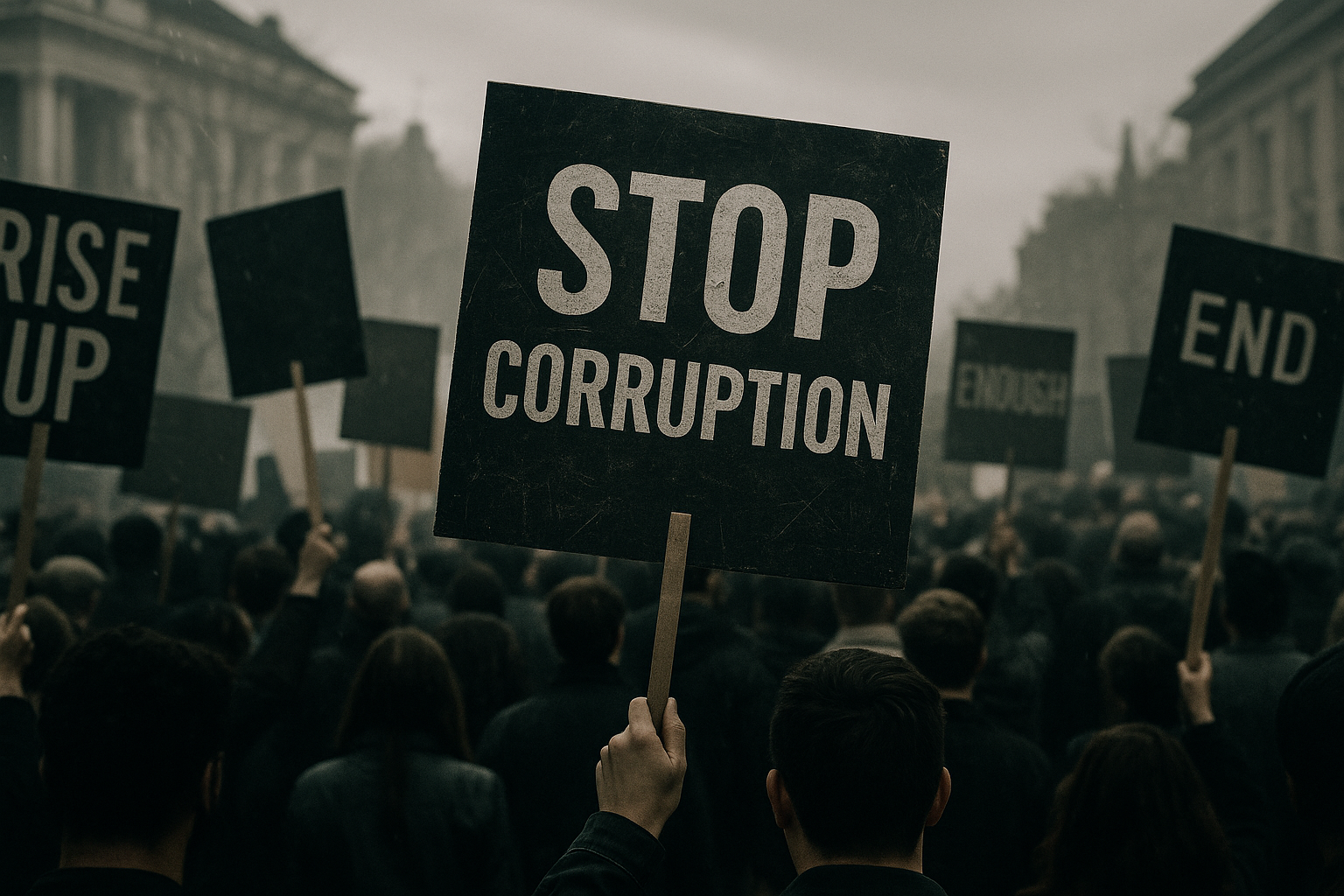For decades, corruption has acted as a silent parasite undermining democratic institutions. It erodes public trust, diverts public resources, and turns governance into a transactional performance for the benefit of elites. In recent years, however, a profound shift has occurred: global protests against corruption are no longer isolated or episodic. They have become transnational in spirit, digitally coordinated, and emblematic of a deeper structural crisis gripping modern states.
A Pattern of Revolt
Across Eastern Europe, Latin America, and Africa, millions have mobilized in the past five years demanding accountability and systemic reform. While the triggers vary — from embezzlement scandals to election fraud or blatant abuse of office — the protests share striking similarities. Demonstrators in Sofia, Santiago, or Lagos chant parallel slogans, brandish similar placards, and document the same abuses across global social media networks.
- Romania (2017): Hundreds of thousands rallied against attempts to weaken anti-graft laws, forcing the government to retreat.
- Chile (2019): What began as anger over a metro fare hike escalated into a nationwide movement against inequality and entrenched corruption.
- Kenya (2023): Revelations about stolen pandemic funds triggered youth-led demonstrations, with whistleblowers exposing billions siphoned from public health budgets.
The pattern is unmistakable: local scandals have become catalysts for global narratives about justice and power.
Why Corruption Mobilizes Like No Other Issue
Corruption provokes a uniquely visceral response. It is not an abstract policy debate; it is experienced daily. Citizens confront it when bribing hospital officials, navigating broken infrastructure, or watching privileged elites escape accountability. Unlike ideological disputes, which often polarize populations, corruption unites diverse groups — rural and urban, left and right — around a single sentiment: the betrayal of public trust.
This moral clarity also makes anti-corruption movements dangerous to ruling elites. There is no legitimate defense for siphoning public funds, no argument to justify theft from citizens. This zero-sum framing escalates both public outrage and state repression.
State Responses: Repression and Performance
Governments under pressure tend to oscillate between two responses: direct repression and performative reform.
Repression is blunt and immediate — riot police, mass arrests, internet blackouts. Belarus in 2020 offers a stark example: anti-corruption demonstrations, intertwined with demands for fair elections, were crushed through systematic brutality. Similarly, Nigeria’s EndSARS movement in 2022 evolved into wider anti-corruption protests and was met with military force and social media bans.
Performative reform, on the other hand, is cosmetic. Governments reshuffle ministers, announce “anti-corruption commissions,” or selectively prosecute rivals — symbolic gestures meant to pacify dissent while leaving systemic rot untouched. These actions often generate headlines but rarely produce substantive change.
Technology: The Double-Edged Sword
Digital tools have transformed protest dynamics. Encrypted messaging apps empower organizers to mobilize securely and rapidly. Livestreams of police violence spread globally within seconds, forcing regimes to weigh international reputational costs.
Yet the same technologies empower governments. AI-driven surveillance, facial recognition, and predictive policing allow states to anticipate demonstrations and neutralize leadership with surgical precision. Authoritarian regimes now share algorithms and tactics, building transnational networks of control to match the protesters’ networks of resistance.
The Global Dimension
Modern anti-corruption movements rarely remain confined within national borders. Diaspora communities amplify uprisings abroad. NGOs contribute investigative resources. Independent journalists cross-pollinate narratives across languages and regions. Hashtags such as #CorruptionKills or #WhereIsTheMoney become global rallying cries, adapted from country to country.
This interconnectedness fosters solidarity but also raises strategic challenges. Authoritarian governments increasingly cooperate — exchanging surveillance technologies, propaganda methods, and counter-protest strategies — forcing activists to innovate continually.
Beyond Outrage: Building Sustainable Reform
Protests ignite change but do not guarantee it. Without institutional follow-through — independent courts, investigative journalism, watchdog agencies — uprisings risk becoming cyclical bursts of anger followed by repression. The challenge is transforming spontaneous mobilization into lasting structural reform.
Some precedents inspire cautious optimism. In Georgia, sustained demonstrations pressured the government into significant judicial reforms in 2021. In South Korea, the impeachment of President Park Geun-hye in 2017 illustrated how mass mobilization, aligned with legal mechanisms, can deliver tangible accountability.
Why OPPOSITIONER Covers This Story
Mainstream media often portray these uprisings as chaotic spectacles: burning tires, tear gas, and clashes with police. OPPOSITIONER seeks to go deeper. Our mission is to analyze the underlying causes, trace connections between movements, and reveal what they signify about the global governance crisis.
By documenting these struggles and placing them in an international context, we amplify voices demanding transparency and remind readers of a stark truth: corruption anywhere corrodes trust everywhere.
For further insights, consult the Transparency International Corruption Perceptions Index.
Read also: AI in politics
